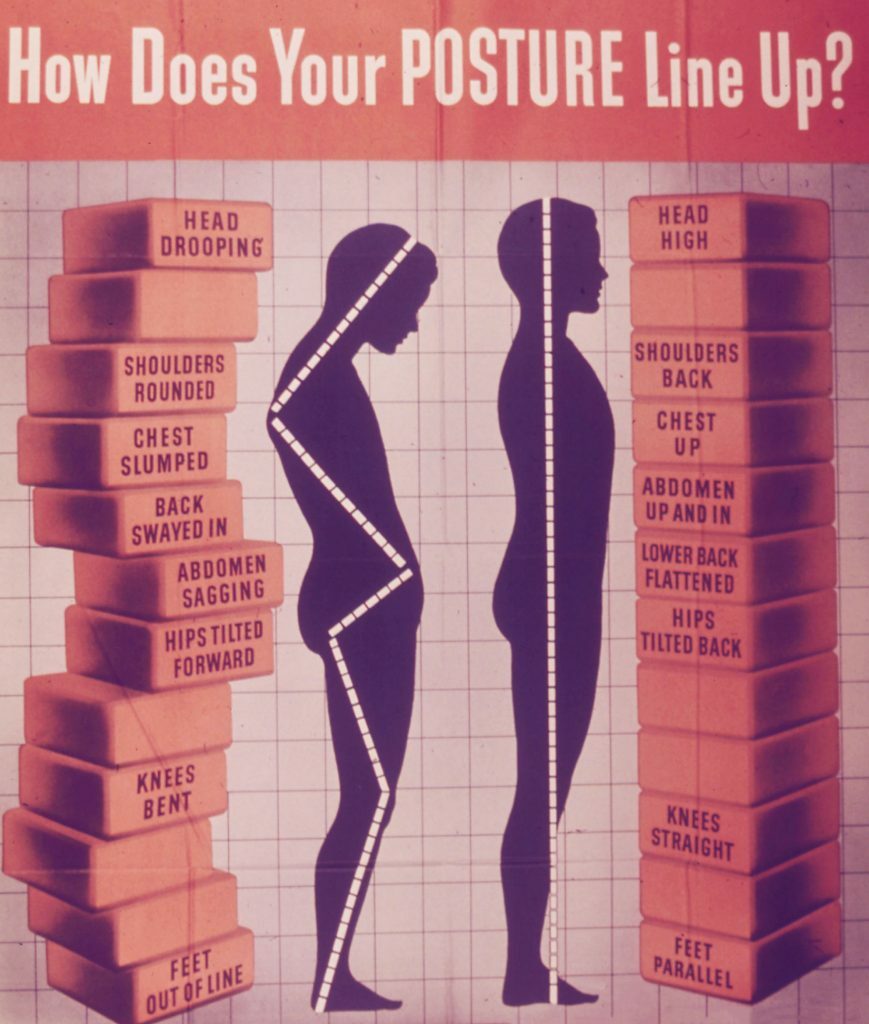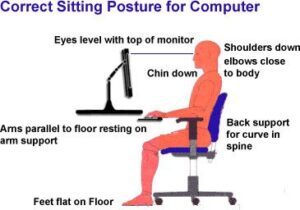Many of us are working in what we might call “less than ideal” conditions right now. If you are working from home, chances are “management” hasn’t designed your work space for ergonomics. And if your posture can affect your brain health, it is highly likely that your work space is indeed affecting your brain health!
We know good posture is important. We all know that we look better when we stand up straight; that’s why Mom always told us to do it. Additionally, for years, chiropractors have advocated improving the curve of the spine through adjustments, traction, and neck pillows. But, does better posture actually improve your brain health?
A number of scientific articles have been published that show that improved posture correlates with improved athletic performance. Anterior head syndrome, a condition secondary to neuro-structural shift has been linked to irritation in nerves, blood vessels (thoracic outlet syndrome), and muscle tissue, and is known to cause pain. It has also been linked to conditions like fibromyalgia, chronic strains, early degeneration, and arthritis. An article published in the journal Brain Circulation puts real numbers to the effects of poor posture.
The Effects of Poor Posture

Katz et. al. studied a group of men and women with abnormal neck curves using both x-ray analysis and an MRI angiogram (MRA) analysis of blood flow into their brain. When they forced the neck into a proper curve, they found that it improved blood flow into the brain by 200 percent. The study shows definitively (possibly for the first time) that improving the neck’s alignment and curve improves blood flow. Interestingly, one of the main hypotheses associated with Alzheimer’s and dementia is that it can be caused by a lack of blood flow into the brain, a condition called chronic cerebellar hypoxia. And, there is also evidence that ADHD in children is may be associated with poor blood flow to the brain.
For many young athletes, a neurostructural shift can lead to decreased athletic performance, which can include loss of focus, increased injuries, or increased fatigue. A quick check to see how your child’s posture affects their running is to look at their shoes. If one side wears quicker than the other, they have an asymmetrical load on one side of their body.
The Easy Button?
Good health should be super simple then! You just need to stand up straight and tall and all of your worries about neurodegenerative disease like Alzheimer’s go away, right? And improving your posture should help your productivity, and even your physical function and balance.
But, what if you can’t stand up straight or if it hurts to do so? Does your “standing up straight” resemble Igor from Young Frankenstein? When we’re young, it should be a little easier to stand up straight. I’m always amazed at the number of children I see who cannot maintain good posture, despite poking and prodding from their mother.
Correcting neurostructural shifts at the base of the skull can help improve both your posture and brain health. Some people refer to the second vertebrae as “the root,” though more commonly, we call it the axis. This area of the spine is the keystone for your body’s neurological system. It acts as a host to many major inputs into your brain, including your posture, balance, and coordination centers. The same center of your brain that’s responsible for your posture, in some cases, can lead to dizziness and vertigo.
The Solution
So, what else can you do to improve our posture and brain health? Here a few things you can easily do by simply paying more attention:
1. Remember what mom said!
Pay attention to the advice your parents and teachers shared when you were growing up, and stand and sit up straight. Our posture is a habit. Make it a good one.
2. Set up an ergonomic work space!
 Your feet should be flat on the floor and your knees should be in line (or slightly lower) than your hips.
Your feet should be flat on the floor and your knees should be in line (or slightly lower) than your hips.- Keep your hips to the back of the chair, and sit up straight. (the back of the chair should be set at a 100-110 degree angle. (Most kitchen table chairs are not.)
- Keep your keyboard close and be sure it is directly in front of you.
- The monitor should be directly in front of you, and your eyes should be level with the top of the monitor
- Keep your computer screen at least 20 inches (an arm’s length) away
- Relax your shoulders, keeping them down, with your elbows close to your body.
3. Improve your relationship with handheld technology.
Have you heard of “tech neck”? It is one of the issues that we are seeing more frequently in younger and younger children! Keep cellphones, iPads, and laptops (when you are not at a desk) directly in front of you, not in your laps.
4. Pay attention to your pillows.
Neck pillows may help while you are sleeping, but finding pillows that support your neck alignment is more important.
To determine how poor your neck curve is, you need to visit a qualified health professional who knows exactly what the health of your spine looks like. Your chiropractor should evaluate you for Anterior Head Syndrome and neurostructural shifts in your spine, and recommend a course of care to correct any issues.
At Keystone Chiropractic, we focus on the root of the spine in a unique way. We correct this area and then guide you to improve those curves and postures over time. While we can help with extreme issues (vertigo, trigeminal neuralgia, dystonia, multiple sclerosis), we can also provide relief for neck and back pain.
For some, those conditions may be precursors to more severe issues. But even for those who don’t develop more serious issues, if getting your head on straight improves blood flow to the brain, improving your posture and brain health, and slowing cognitive decline, everybody stands to benefit. We all have to go some day. I just want to keep my wits about me when I do.
About Keystone Chiropractic
As an engineer, Dr. Schurger looks at the whole body as a system to determine what is best for each patient. He starts with custom spinal imaging in order to create a custom correction. Dr. Schurger has transformed himself through the ketogenic diet and offers nutritional advice to help patients improve their overall health. His practice, Keystone Chiropractic is at 450 S. Durkin Drive, Ste. B, Springfield. Call 217-698-7900 to set up a complementary consultation.

Recent Comments